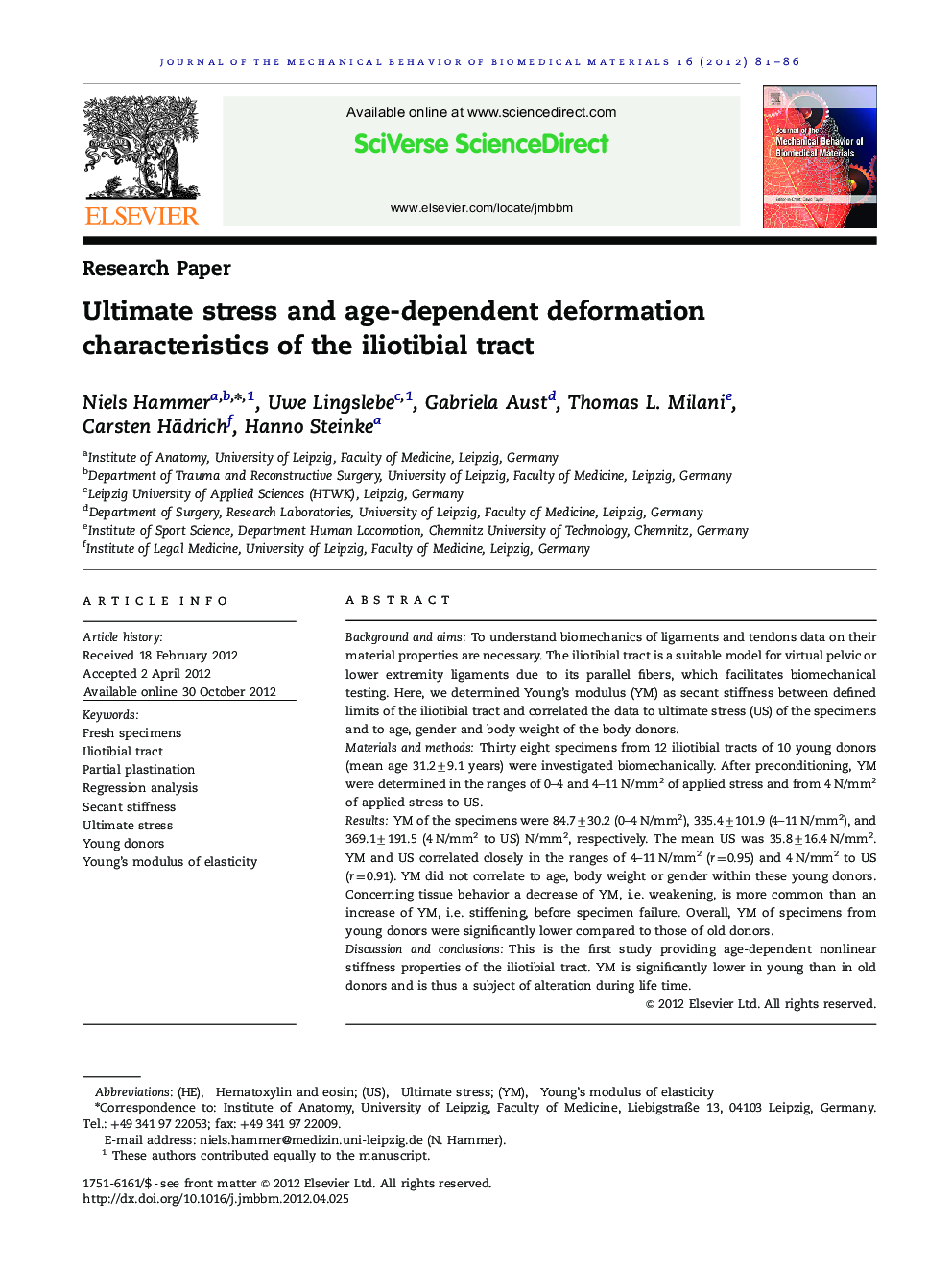| Article ID | Journal | Published Year | Pages | File Type |
|---|---|---|---|---|
| 810952 | Journal of the Mechanical Behavior of Biomedical Materials | 2012 | 6 Pages |
Background and aimsTo understand biomechanics of ligaments and tendons data on their material properties are necessary. The iliotibial tract is a suitable model for virtual pelvic or lower extremity ligaments due to its parallel fibers, which facilitates biomechanical testing. Here, we determined Young's modulus (YM) as secant stiffness between defined limits of the iliotibial tract and correlated the data to ultimate stress (US) of the specimens and to age, gender and body weight of the body donors.Materials and methodsThirty eight specimens from 12 iliotibial tracts of 10 young donors (mean age 31.2±9.1 years) were investigated biomechanically. After preconditioning, YM were determined in the ranges of 0–4 and 4–11 N/mm² of applied stress and from 4 N/mm² of applied stress to US.ResultsYM of the specimens were 84.7±30.2 (0–4 N/mm²), 335.4±101.9 (4–11 N/mm²), and 369.1±191.5 (4 N/mm² to US) N/mm², respectively. The mean US was 35.8±16.4 N/mm². YM and US correlated closely in the ranges of 4–11 N/mm² (r=0.95) and 4 N/mm² to US (r=0.91). YM did not correlate to age, body weight or gender within these young donors. Concerning tissue behavior a decrease of YM, i.e. weakening, is more common than an increase of YM, i.e. stiffening, before specimen failure. Overall, YM of specimens from young donors were significantly lower compared to those of old donors.Discussion and conclusionsThis is the first study providing age-dependent nonlinear stiffness properties of the iliotibial tract. YM is significantly lower in young than in old donors and is thus a subject of alteration during life time.
Graphical abstractFigure optionsDownload full-size imageDownload high-quality image (288 K)Download as PowerPoint slideHighlights► Biomechanical data of the iliotibial tract of young donors are presented. ► Young's modulus is described by means of regression analysis. ► Young's modulus of young donors is significantly different to old donors.
